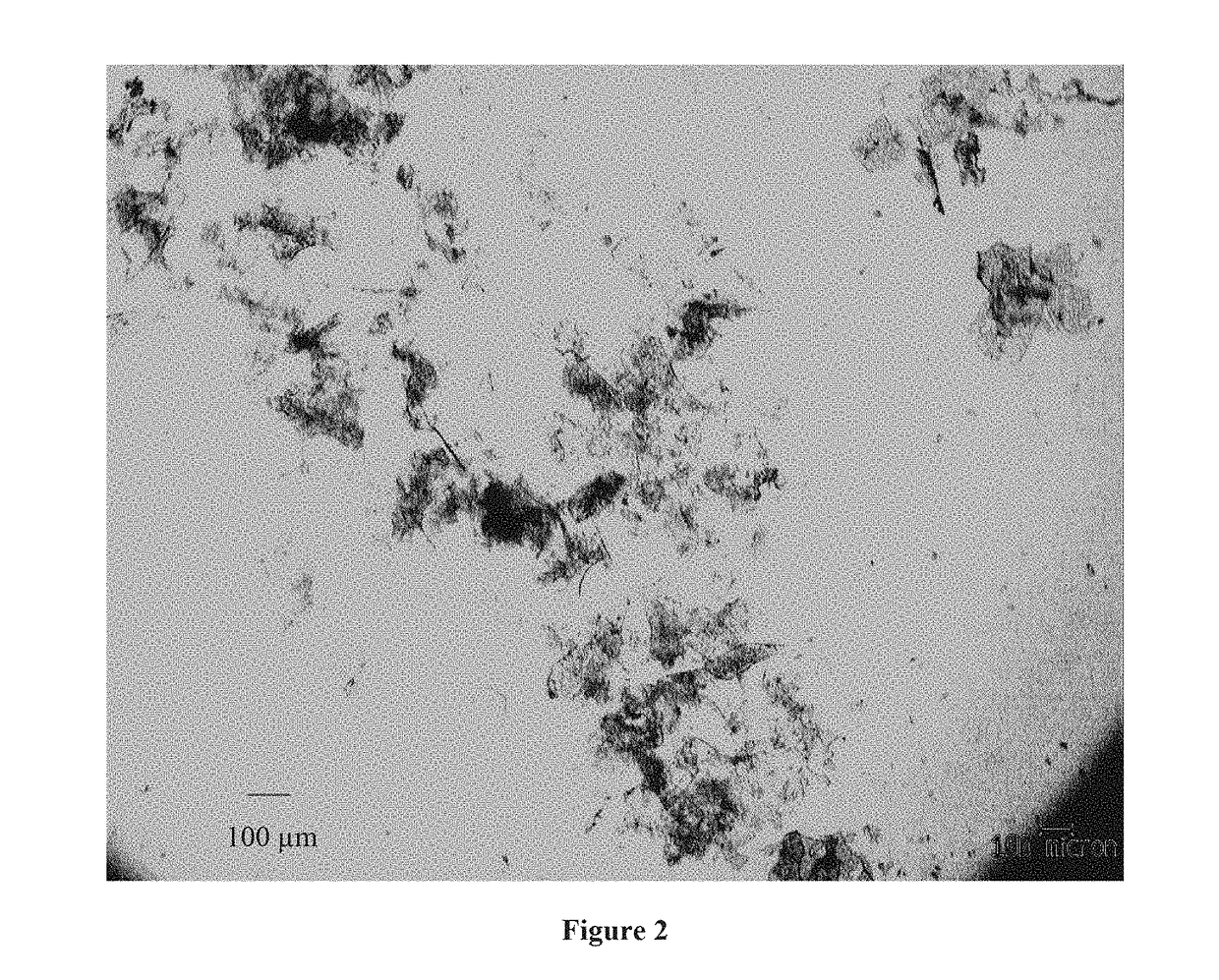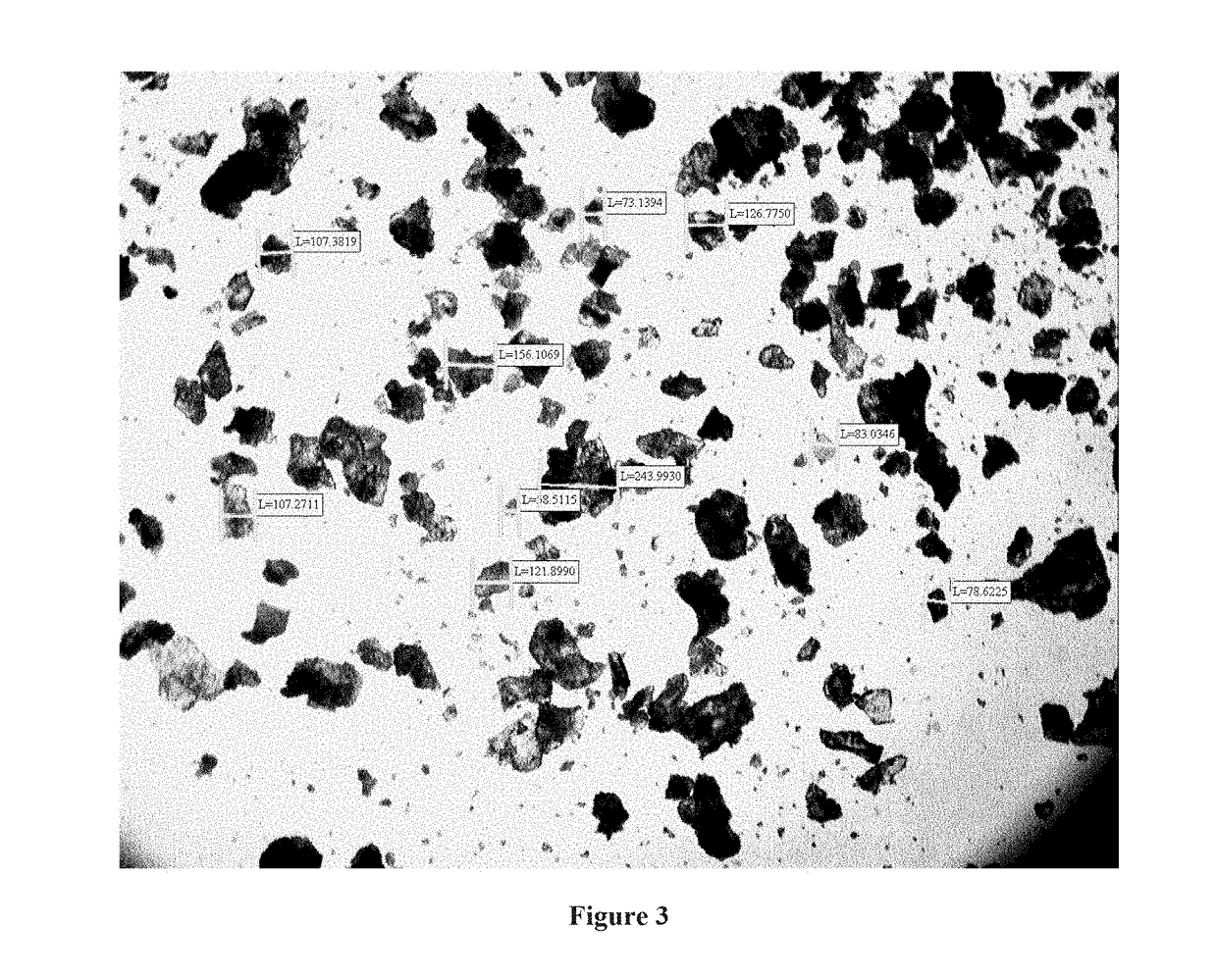Ultra-pure agonists of guanylate cyclase C, method of making and using same
a technology of guanylate cyclase and guanylate cyclase, which is applied in the field of purifying guanylate cyclase c peptide agonists, can solve the problems of low yield, gastrointestinal inflammatory diseases, and increased susceptibility to inflammatory stimuli, and achieves the effects of reducing susceptibility, reducing susceptibility, and improving susceptibility
- Summary
- Abstract
- Description
- Claims
- Application Information
AI Technical Summary
Benefits of technology
Problems solved by technology
Method used
Image
Examples
example 1
on of Side-Chain Protected Fragments of SP-304 (as in WO 2012 / 118972)
[0252]Attachment Fmoc-AA-OH to 2-ClTrt Resin
[0253]2-ClTrt resin (10 g, substitution=1.0 mmol / g resin) was suspended in 100 mL of dichloromethane (DCM) for 5 minutes, and then drained. The esterification was performed using 1.5 equiv. of Fmoc-amino acid and 1.7 equiv. Diisopropylethylamine (DIEA) in 80 mL of DCM (with minimum quantity of dimethylformamide (DMF) to dissolve the amino acid completely) for 2 hours. The resulting resin was washed with 60 mL of DCM and endcapped with 60 mL of DIEA / methanol (1:9, v / v) solution for 30 minutes. The loaded resin was then washed with DCM (6 vol.) for 2 times, DMF (6 vol.) for 3 times and methyl t-butylether (MTBE) (6 vol.) for 3 times, and dried under high vacuum. The substitution of the Fmoc-protected resin was determined by Fmoc release assay. Finally, the Fmoc group was deprotected with a mixture of 5% piperidine, 1% 1,8-diazobicyclo[5.4.0]undec-7-ene (DBU) and 1% N-Hydrox...
example 2
ion of Fragments of SP-304 in Solution (as in WO 2012 / 118972)
[0260]Synthesis of Fragment C: H-AA15-16OtBu (1-1)
[0261]A solution of Fmoc-Cys(Acm)-OH (124.38 μm, 0.3 mol), H-Leu-OtBu.HCl (67.12 gm, 0.3 mol), and HOBt (40.54 μm, 0.3 mol) in DMF (600 mL) was cooled to −5° C. 2-[1H-Benzotriazole-1-yl]-1,1,3,3-tetramethyluronium hexafluorophosphate (HBTU) (113.79 μm, 0.3 mol) was added and dissolved completely. DIEA (183.1 mL, 1.05 mol) was added dropwise over a period of 105 minutes at the same temperature with good stirring, keeping the pH of the mixture between 6 and 7. Stirring was continued for 15 minutes at 0° C. and the reaction was monitored with TLC. The reaction mixture was diluted with ethyl acetate (EtOAc) (600 mL) and 5% H3PO4 (300 mL). The organic layer was separated and the aqueous layer was extracted with EtOAc (600 mL). The combined extracts were washed with 5% H3PO4 (2 times), H2O (1 time), saturated NaHCO3 (3 times), H2O (2 times), and brine (2 times). The solution was ...
example 3
Cyclization and Purification of SP-304 by Polystyrenic Absorbent Resin (as in WO 2012 / 118972)
[0270]HAA1-16OH (4-4) (0.58 gm) was dissolved in 5 mL of acetonitrile and diluted with 575 mL of purified water. The solution was adjusted to pH 8-9 with 25% ammonia solution, and 3% hydrogen peroxide (0.58 mL) was added, then the reaction mixture was kept for an hour with monitoring the disulfide formation by HPLC. Nitrogen was then passed through the reaction mixture and the solution was acidified to pH 3-4 with acetic acid (71.8% HPLC, recovery 98.5% estimated from peak area). The resulting mixture was added 1% iodine / ACN dropwise over a period of 10 minutes with good stirring until the yellow color of the iodine persisted. Stirring was continued for 30 minutes at 17-20° C. The iodine was quenched by addition of 0.5 M ascorbic acid aq. until the yellow disappeared. Then, the pH of the mixture was adjusted to 6-7 with 25% ammonia solution (51.0% HPLC, recovery 50% estimated from peak area)...
PUM
| Property | Measurement | Unit |
|---|---|---|
| bulk density | aaaaa | aaaaa |
| chromatographic purity | aaaaa | aaaaa |
| particle size distribution | aaaaa | aaaaa |
Abstract
Description
Claims
Application Information
 Login to View More
Login to View More - R&D
- Intellectual Property
- Life Sciences
- Materials
- Tech Scout
- Unparalleled Data Quality
- Higher Quality Content
- 60% Fewer Hallucinations
Browse by: Latest US Patents, China's latest patents, Technical Efficacy Thesaurus, Application Domain, Technology Topic, Popular Technical Reports.
© 2025 PatSnap. All rights reserved.Legal|Privacy policy|Modern Slavery Act Transparency Statement|Sitemap|About US| Contact US: help@patsnap.com



